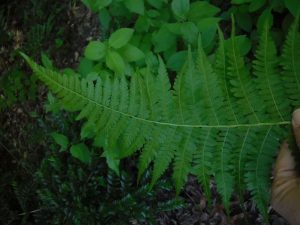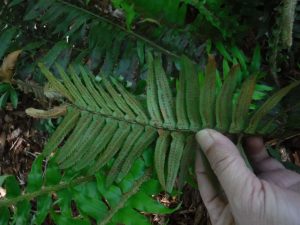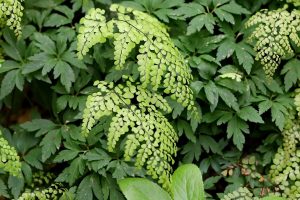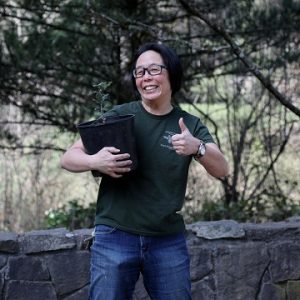Wait, are there ferns at the Arboretum? Yes indeedy, there are lots of ferns at the Arboretum! Although the Hoyt Arboretum is focused on tree conservation, we have six species of ferns that are native to our area and are regionally abundant in much of the Pacific Northwest. A few of our ferns may have been intentionally planted to compliment the native landscaping, but the majority of our ferns occur spontaneously as a significant ecological component in many of the Arboretum’s abundant natural areas. We also have one non-native fern that was intentionally planted, but records on when it was planted, source material, etc. are spotty (more information on that topic can be found below).


So…what exactly is a “fern”? Well, the simplest answer is that a fern is a vascular plant that reproduces via spores. What this means is that ferns are mostly terrestrial plants in our region (there are a few aquatic ones, but they are mostly uncommon in the Pacific Northwest), they have vascular tissue to transport water and nutrients around the plant (much like our veins and arteries do), and they use spores for reproduction (they do not have flowers and fruits). Ferns also have true roots and leaves, often with a waxy cuticle to prevent water loss, and have a unique life-cycle featuring two independent life stages.


Native ferns found at the Arboretum include:
Sword fern (Polystichum munitum) – Widespread in many forest understory areas.
Licorice fern (Polypodium glycyrrhiza) – An epiphyte, frequent on old big-leaf maple trees.
Deer fern (Blechnum spicant) – Uncommon at the Arboretum! I know of two sites. Do you know of others?
Lady fern (Athyrium felix-femina) – Common at the Arboretum, often in slightly moister sites.
Bracken fern (Pteridium aquilinum) – Common in more disturbed, sunny or forest-edge sites.
Maidenhair fern (Adiantum aleuticum) – Common in shady, wet areas.
See this handout to help you identify the native fern species mentioned above.
Now for something that is a bit of a puzzle (as far as when and where it exactly came from) is that we have a strange non-native fern in the Winter Garden, with no prior records of it being intentionally planted there. Located on a gentle hillslope near some of our hellebores (Helleborus orientalis), this mystery fern is closely related to our native maidenhair fern in the genus Adiantum. It has delicate pinnae (leaflets) on a black-colored upright stipe, with its sporangia located along the upper edges of each pinna with a false indusium folded over each sorus. I believe this it is Adiantum venustum (common name is Himalayan maidenhair), and although its origin is undocumented in our database, Martin (Hoyt Arboretum’s illustrious curator) believes that a previous curator intentionally planted this fern in the Winter Garden in the 1980s or 1990s. It looks very much like one of the ferns that is common at Leach Botanical Garden, so we assume that it came from Leach, and was simply planted in our Winter Garden without proper documentation. Anyone know differently?


About the Author


